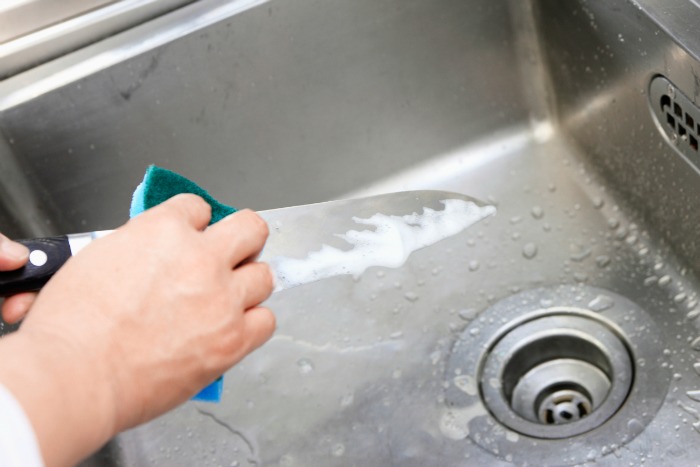Knife Safety Tips to Help Keep All Your Digits Intact
Posted by Julie on May 19th 2017
Quality cutlery is one of our top recommendations for any kitchen. Whether you're a new graduate in your first apartment or a seasoned home cook, it's important to work with the right tools.
It's also important to know how to use those tools properly. We collected a few key knife safety tips to help ensure you slice, dice, and mince your food, not your fingers. Study them, practice them, and stick by them every time you get out your trusty chef's knife or Santoku knife.
Knife Safety Tips: Sharp Knives Are Safer
We've written before about how to keep your knives sharp. It's actually safer to work with sharp knives than dull ones. A sharp knife glides through food with less pressure, which makes it easier to control. That means the knife goes exactly where you want it to.

On the other hand, a dull knife requires more force when cutting, leading to greater potential for accidents. A dull knife can slip along the surface of food, especially fruits and vegetables. If it's too dull to pierce the food, the blade may land on the cutting board, the counter, or on your fingers.
Knife Safety Tips: How to Hold Your Knife
Now that you have a sharp knife in hand, it's important to hold it properly. Refer to this video from AllRecipes.com which demonstrates how to grip a knife for maximum efficiency.
As you can see, your thumb and index finger pinch the blade, while the rest of your fingers cup the handle. Most home cooks keep all five fingers on the handle, but this grip doesn't give you the same control. The pinch grip helps balance the weight of the knife and use the cook's strength for cutting, not gripping or balancing.
Knife Safety Tips: How to Hold Your Food
Just as important as how you hold the knife is how you hold the food you're cutting. It's unlikely the knife blade would accidentally come in contact with the hand holding the knife, but your opposite hand is a different story.

Brace the food you're cutting with your hand in a claw shape. Tuck your fingertips back so your knuckles are protruding. Continue watching the video above to see another demonstration of safe hand position.
Because you curl your fingertips out of reach of the knife, you may feel like you don't have a firm grip on the food you're cutting. That's yet another reason a sharp knife is essential. You want that blade to glide right through the food with as little effort as possible.
Knife Safety Tips: Proper Care and Storage
Once you've safely sliced, diced, and minced your food and not your fingers, be sure to wash and dry and put away your knives promptly. Proper care and storage is part of knife safety too. Not only will it keep your knives sharp, it also ensures you won't have an accident between prep and cleanup.

Don't leave knives sitting in the sink or on the counter. In the sink, they can get banged up. You might accidentally grab the blade when reaching into a sink full of soapy water. Left on the counter, you could inadvertently knock one onto the floor (or your foot). Better to store them immediately and avoid any mishaps.

